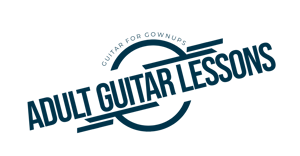Practice Makes Perfect…
Sure, playing guitar is fun, relaxing, satisfying, and a great way to spend an evening with friends. But the truth of the matter is, in order to get good on the guitar, just like anything else, you’ve got to spend some time practicing.
For some, the term “practicing” conjures up visions of drudgery and self-imposed imprisonment. And it is that mindset that leads many new guitar students to failure. But just by tweaking their outlook on practicing to a more positive slant, most students can turn practice from a mind numbing, boring task, into an exciting world of new discovery.
One way of accomplishing this is to split practice time up into segments. Devoting a little time to each segment of practice to offset the boredom and/or burnout. A guitar student might split practice time into three different segments. One for learning new material, one for reviewing past material, and one for “doodle” time.
New Material
As an aspiring guitarist you should always be hungry to learn new things on the guitar. It might be a new scale, chord progression, riff or song. The input of new material on the guitar keeps things “fresh” and creates a level of anticipation every time you pick it up. There is such a thing, however, as “too much new information”. Take new material in sips, not gulps. Give smaller pieces time to digest before trying to cram too much in there. You will make a lot more progress on the guitar by letting small pieces of new information become slowly ingrained into your playing style, than trying to shove it all down at once.
Review Past Material
When you learn a new piece or concept on the guitar it is, quite often, very clear in your mind when first learning it. You can sit there and play it over and over with no problem. But then you go back the next day and can’t remember a lick about it! It happens to everyone. That is why devoting a segment of your practice time to going back over past lessons or songs will be one of the most productive uses of your time possible.
“Doodle Time”
It can be amazing what happens when you just sit around and “doodle” on the guitar. Doodle time involves throwing out all the rules, turning off the internal “editor”, and just “messing around” with whatever comes out of your fingertips.
Call this “recess” for the guitar. Nothing is right or wrong, it doesn’t matter what you play. Just let your mind run free and don’t “over-thinK” anything. Some of the best songs and musical pieces have been written as a result of the composer allowing themselves to “float freely” on their instrument with no concern of where they land.
Whether you have 3 hours to devote to practice, or only 15 minutes – try dividing your allotted amount of time into these three segments and see how much more you improve on the guitar…and, how much more fun you have!
Dedicated Practice Space
It would be great if we all had a separate room in the house that could be deemed our “music” room. A place that we could go and lock out the world while we get lost on the fretboard. Unfortunately that’s not always the case and may not shake well with the rest of the family! One solution is to try and agree on a dedicated space, somewhere in the house, that you can go to for practicing.
It may be a corner of an office or bedroom, a bonus room, a utility room, a garage or closet! Anywhere that you can take a few minutes periodically and be alone with no distractions.
“Do Not Disturb”
Try to have an understanding with family members that when you close the door to your practice area you are not to be disturbed for anything short of an emergency. Turn off the cell phone, the email and the TV. Create a quiet atmosphere where you can focus completely on playing guitar.
Practice “Tools”
In addition to your guitar, it is also a good idea to keep nearby some other items that you may need during practice. If you are taking online lessons then you obviously want to be close to your computer. Make sure your guitar tuner is close by, as well as a metronome and some picks. It is a good idea to start a note pad for jotting down lesson highlights and always have that within arms reach. Try to keep all these things close to your guitar “workstation” so that you don’t have to interrupt your practice time chasing them down.
It’s also important to be comfortable while practicing. Try to sit in a chair with no or “low profile” arms that will not impede the guitar. Wear the most relaxing clothing possible. You may accomplish more at practice time in sweat pants and T-shirt, or your flannel “jammies”, than in a stiff three piece suit. I know I do!
The key to good and productive practicing is to dedicate your time to a variety of practice elements, to dedicate a space to undisturbed practicing, and to dedicate your mind to focused practice time. By doing this you will be amazed at how much you can accomplish on the guitar, even with a limited amount of time to devote to practice.



